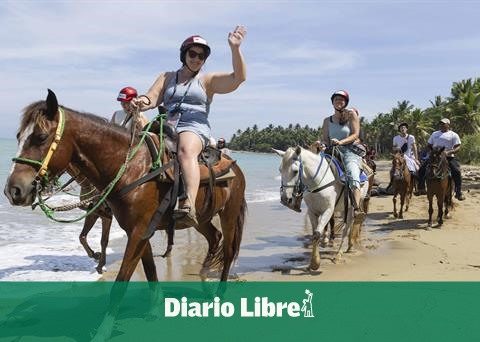The director of the National Meteorological Office warned that the cyclone season that begins this Wednesday finds the waters of the Atlantic Ocean warm due to the effects of La Niña, and that this is the energy that the cyclones tropical to form and intensify to the point of being dangerous.
Gloria Ceballos He explained that the institutions that manage emergencies, that is, the meteorological services of the Caribbean and the North Atlantic, have prepared themselves for a cyclone season more active than normal.
Ceballos said that it is normal for 14 named storms to form in a season, however, the projections made by universities, as well as the National Office of Oceanic and Atmospheric Administration (NOAA), among other agencies specialized in this type of analysis, They predict that this year there will be between 14 and 21 named storms, and of those between six and ten can reach the category of hurricane.
Interviewed by Héctor Herrera Cabral on the program D’Agenda, which is broadcast every Sunday on Telesistema Channel 11 and TV Quisqueya for the United States, the official explains that you have to be prepared because the Dominican Republic is in the Caribbean, on the route of the hurricanes, and for this reason it urges the population to be aware of early warnings that imply early prevention.
He recalled that last year a slightly above normal season was projected, with 18 named storms, and concluded with 21.
He argued that, although people comment that 21 phenomena were formed last year and that the country was not directly affected, we must be prepared in case they impact the national territory with their greatest forces.
“We are with La Niña, which is the cooling of the Eastern Equatorial Pacific, when we have this cooling of the waters of the Pacific, then we have the warmer Atlantic, this is the energy that tropical cyclone-type phenomena need to form, intensify, and give to ruin a phenomenon that can be dangerous for land area, then in the analyzes that are done prior to the cyclone season it is taken into account if we have El Niño or La Niña”, argued the expert in weather forecasts.
Say that, on the other hand, when there is the El Niño phenomenon, “as they were here in 2014 and 2015, the cyclonic seasons were not very active, and in the case of La Niña, as happened in the Dominican Republic in 2017, we have seasons very active cyclonic storms.
He recalled that in 2017 Irma and María were formed, the latter devastated Puerto Rico.
María caused nearly 3,000 deaths and the exodus of hundreds of thousands of Puerto Ricans.
Ceballos said that, historically, the hurricanes that have hit the Dominican Republic, and caused the most damage, have formed in the Cape Verde Islands, in West Africa.
The engineer Gloria Ceballos He also warned that the high temperatures that were recorded in the months of April and May broke global records, and although that did not happen in the country, the heat that people felt was 40 degrees Celsius, since the temperature was 36 degrees, but the relative humidity of the air and the effects of dust from the Sahara were added.
“That was worldwide, in India there was an extraordinary situation of record temperature of which there was no record, in several provinces of Spain the same situation occurred, between the end of April and the first days of May, and we have not stayed ago, temperatures have not broken records of previous years, but they have been high”, said the director of Onamet.
He said that “the relative humidity in the coastal area is higher than in the interior areas, despite the fact that temperatures reached 36 degrees, the thermal sensation that the body experienced exceeded 40 degrees and that is why many people were, practically, desperate for heat, and the dust from the Sahara contributed to that hot environment.”
He added that this cloud of dust from the Sahara that moves in the summer months, now in May, after the first cloud that affected the country, the population must be aware that these clouds will continue to move throughout the summer.
He recommended not to expose yourself in the hours of greatest insolation when the country is under the influence of the dust clouds of the Sahara and not to do vigorous sports.


















